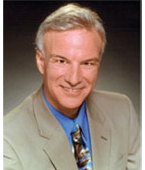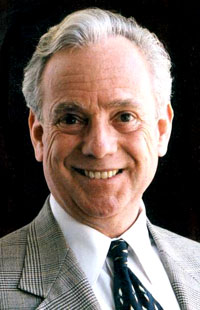<

Host: Anti-Aging Psychologist Dr. Michael Brickey
Guest: Dr. Neil Fiore
Broadcast and podcast on webtalkradio.net. The podcast is also below.

My 9-year-old twins are on book six of Harry Potter. My college students son and daughter watched the Star Wars and the Ring movies, my wife watches lot of science fiction TV, and yes I love Desperate Housewives. We crave stories and have lots of stories about success in business and sports, but few about how to age well. We met today’s guest, Dr. Neil Fiore, author of Coping with the Emotional Impact of Cancer, when he shared with us the psychological strategies that helped him overcome a “terminal” cancer diagnosis thirty years ago. He is a master of storytelling and hypnosis and today shares with us how stories can help us be liver healthier, happier, and longer lives.
It is such a delight talking with Dr. Neil Fiore. I thought it might help to give some context for Ericksonian therapy compared to other psychotherapies. In the, Dr. Albert Ellis challenged Freudian psychology with how your thinking was wrong, and in-your-face advice about what you should do. Dr. Phil is the reincarnation of Albert Ellis.
Also in the 1950s, Dr. Carl Rogers’ challenged Freudian psychology with his client center therapy, which became very popular. Rogers believed the answer was within the client, and would loving feed back and paraphrase what the client said to help the client sort things out for himself. With little credit, Rogerian therapy is the approach many personal coaching programs are teaching coaches these days.
In the 1960s, Dr. B. F. Skinner developed radical behaviorism, which said behavior change was all a matter of what you reinforce and what you punish. Eventually, cognitive behavioral therapy became the most popular therapy, using Skinner’s reinforcement principles and Ellis’ emphasis on what you think—the cognitive in cognitive behavioral psychology.
Like Rogers, Erickson believed people have the wisdom already within them but need guidance in finding it. But rather than just facilitating the client finding the answer within, Erickson assessed what the client needed and crafted a story to help the client discover and realize the solution. Which school of therapy is right? If you only have a hammer, everything looks like a nail. Therapists who have a full toolkit, tend to use their favorite tools but also use a different tool if that if what the client needs.
Comedians follow the rule of three in setting up jokes—two to set up the pattern and one to violate it. Dr. Fiore described how Erickson’s rule of three was to give three validations, for example acknowledging his son’s pain, blood, and fear, before leading him a new direction with thoughts about bragging rights. NLP practitioners and hypnotists call this pacing where the client is and then leading where the client needs to go.
Neil is also very into thinking of the brain as a computer and taking control of the computer by overwriting problematic default programs. With depression, for example, just by noting each day three things that went well, and what you did to help it happen, you may not need the Prozac. Finally, he places a lot of emphasis on quickly taking control of emotions and relaxing by inhaling, holding your breath, tensing muscles, exhaling, connecting with your environment, realizing you are taking control, and tuning into wonder rather than worry.
Dr. Fiore’s website is www.neilfiore.com. Dr. Brickey’s other websites are www.DrBrickey.com an www.Anti-Aging-Speaker.com.ous love at every age.
